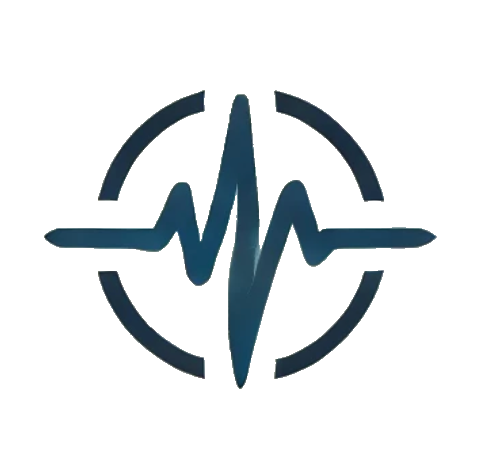If you’re thinking about going to medical school in Canada, you probably already know it isn’t cheap. Understanding what the actual costs look like over four years, both in and out of the classroom, can be a real eye-opener. While many students are drawn to medicine for the right reasons whether it be the desire to help others, the fascination with science, or the long-term career stability and flexibility, the financial realities of becoming a doctor in Canada deserve just as much attention.
The important thing is to be informed. Let’s take a close look at what you’ll be spending on medical school in Canada, from tuition to textbooks, rent to residency applications. Whether you’re just starting to explore this path or you’re already applying, having a clear understanding of the financial landscape can help you plan more confidently for the years ahead.

Discover our practical tips to study smarter and balance your personal life to thrive in your first year of medical school.
Tuition: The Largest Cost
The most obvious cost is tuition, and this varies widely depending on the school and your residency status. As of 2024, here’s a rough breakdown:
- Ontario Schools (e.g., University of Toronto, Western, McMaster, Queen’s, Ottawa): $25,000 – $29,000/year
- British Columbia (UBC): ~$20,000/year
- Alberta (U of A, U of C): ~$13,000 – $17,000/year
- Quebec (McGill, Laval, Sherbrooke, Montreal):
- ~$4000/year for Quebec residents
- ~$12,000 – $20,000/year for non-residents, depending on the school
- Atlantic Canada (Dalhousie, Memorial): ~$14,000 – $22,000/year
Over four years, you’re looking at $60,000 to $120,000+ just in tuition, depending on where you complete your medical school training.
Looking beyond medicine? Explore alternative healthcare careers that offer both high salaries and great job satisfaction.
The “Other” Hidden Costs
Unfortunately, tuition is just the tip of the iceberg. Once you factor in living expenses, books, equipment, application fees, travel, and exam fees, the total cost balloons quickly.
Here’s what that looks like on an annual basis:
1. Living Expenses
Living expenses, particularly in large urban centers like Toronto, Vancouver, or Montreal, can be a serious burden. Students often underestimate how much they’ll spend on rent, groceries, transportation, utilities, and other day-to-day necessities.
- Rent (shared apartment in a city): $800 – $1,500/month
- Food: $200 – $400/month
- Transportation: $100 – $150/month
- Utilities, internet, phone: $100 – $200/month
- Total estimate: $15,000 – $22,000/year
2. Books and Equipment
- Textbooks and resources: $500 – $1,000/year (though many students now rely on shared or online resources)
- Stethoscope, scrubs, lab coat, medical tools: $500 – $1,000 upfront
- Laptop or tablet: $1,000 – $2,000 (if not already owned)

3. Application and Licensing Fees (Later in MD Programs)
- MCCQE Part I (Medical Council of Canada Qualifying Exam): ~$1,400
- CaRMS application (residency match): ~$300 – $1,000 depending on the number of programs
- Elective travel/accommodation: $1,000 – $5,000+, depending on number and location of electives
Over four years of medical school, many Canadian med students can expect to spend $100,000 – $250,000+ in total depending on tuition, lifestyle, and other variables.
Funding Medical School: Scholarships, Loans, and Lines of Credit
Luckily, no one expects you to pay all of this upfront. Below are the methods most students afford medical school.
1. Government Student Loans
Federal and provincial student aid, like OSAP or Canada Student Loans, can help cover tuition and living costs, often through a mix of loans and non-repayable grants. These programs are interest-free during school, with repayment starting six months after graduation.
There are annual and lifetime limits, so many med students use this aid alongside a line of credit. While government loans offer less flexibility, they come with benefits like repayment assistance and income-based plans, which can be helpful after training.
2. Bank Lines of Credit
Most major Canadian banks offer professional student lines of credit (LOCs) for medical students, often up to $350,000–$400,000, with interest-only payments during medical school and residency. Scotiabank, TD, RBC, BMO, and CIBC offer professional LOCs to medical students which typically come with competitive rates, often prime -0.25%. LOCs are the most common way students fund tuition, rent, and living expenses.
Students draw from the LOC as needed, topping it up throughout their training. While interest starts accruing right away, full repayment usually isn’t required until after residency. At that point, the LOC is typically converted into a loan with regular monthly payments.
It’s smart to compare offers between banks, as some include perks like waived fees, upgraded chequing accounts, free credit cards, welcome bonuses, or flexible repayment terms. A professional LOC offers essential flexibility, but managing it wisely is key to avoiding long-term financial stress.
Compare top LOC options for Canadian medical students—interest rates, borrowing limits, credit card perks like insurance and lounge access, plus exclusive student banking benefits.
3. Scholarships and Bursaries
Each school has its own set of internal awards based on merit or financial need. This is a good first place to start to look for scholarships or bursaries.
There are also external scholarships like:
- Canadian Medical Foundation Bursaries
- Ontario Medical Association Bursaries
- MD Financial Management Scholarships
- Indigenous or rural student incentives
These can help offset costs, but funding is often limited and competitive. Despite these supports, many students still graduate with six-figure debt.
4. Summer or Part-Time Employment
Depending on your medical school’s curriculum, you may have up to 12 weeks off during the summer in your preclerkship years. Many students use this time to relax, travel, or reconnect with loved ones, a well-deserved break after a demanding year.
Summer breaks are a great chance to gain experience or earn extra income. Some students take on part-time or full-time work in clinical or non-medical roles, while others get involved in research. Many universities and hospitals offer summer research programs that provide a stipend or hourly wage, and some positions may even be remote. Whether you use the time to recharge or explore professional interests, the summer break is a flexible and valuable part of your training.
Otherwise, some students manage to find part-time employment during the school year. I know students who have worked as personal trainers or music teachers on the side to help provide a little bit of extra income each month.
Is Medical School Worth the Investment?
Despite the high cost, most people still see medicine as a worthwhile investment. Financially, it almost always is.
Average Salary After Residency
- Family physicians: $200,000 – $350,000/year
- Specialists: $250,000 – $500,000+/year
- Surgeons: $350,000 – $800,000+/year
- Residency salary: ~$60,000/year (plus benefits)
Wondering which high-paying specialties are hardest to get into? Find out in the most competitive medical residency specialties in Canada.
Medical School Debt Repayment Timeline
Many new doctors graduate with six-figure debt, but they are usually able to pay it down in a reasonable amount of time. Some aggressively repay their loans within five years, while others take longer to maintain lifestyle balance or invest in other priorities like buying a home or starting a family.
The Mental, Physical, and Emotional of Medical School
It’s important to also acknowledge the non-financial costs of pursuing medicine. Burnout is common, and the pressure of debt can amplify that stress. Some students feel forced into higher-paying specialties just to manage their loans. Others delay life milestones like buying a house or starting a family due to financial constraints.
This is why financial literacy and support systems are just as important as choosing the right school. Knowing what you’re signing up for financially can help prevent future regret.
Tips to Manage the Cost of Medical School
If you’re heading down this road, here are a few practical tips:
- Live with roommates or at home if possible to save on rent.
- Buy used textbooks or rely on your school’s library or free PDFs when possible.
- Apply widely for bursaries, as even small ones add up.
- Track your spending with apps like Mint or YNAB.
- Start budgeting early, ideally before medical school begins.
You don’t need to have it all figured out before your first day, but being proactive goes a long way.

Final Thoughts
Medical school in Canada is expensive. However, with planning, support, and a clear understanding of what you’re getting into, it’s an investment that can pay off financially and personally. Not everyone finishes without debt, but most finish with a strong foundation for a meaningful (and often well-compensated) career.
If you’re on the fence or feeling overwhelmed, just know that you’re not alone. Thousands of students go through the same financial gauntlet each year. Ask questions, do your homework, and take it one step at a time. The road may be long, but it’s one that many are glad they walked.
Discover the best medical student apps, including powerful note-taking tools like Obsidian and Notability to help you stay organized, study smarter, and manage your workload more efficiently.








